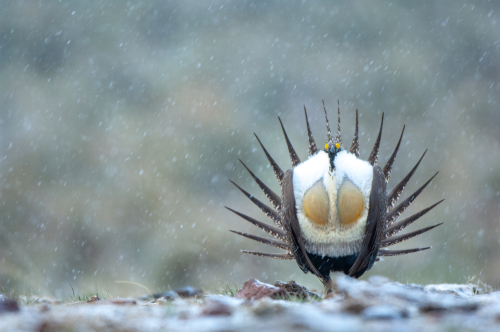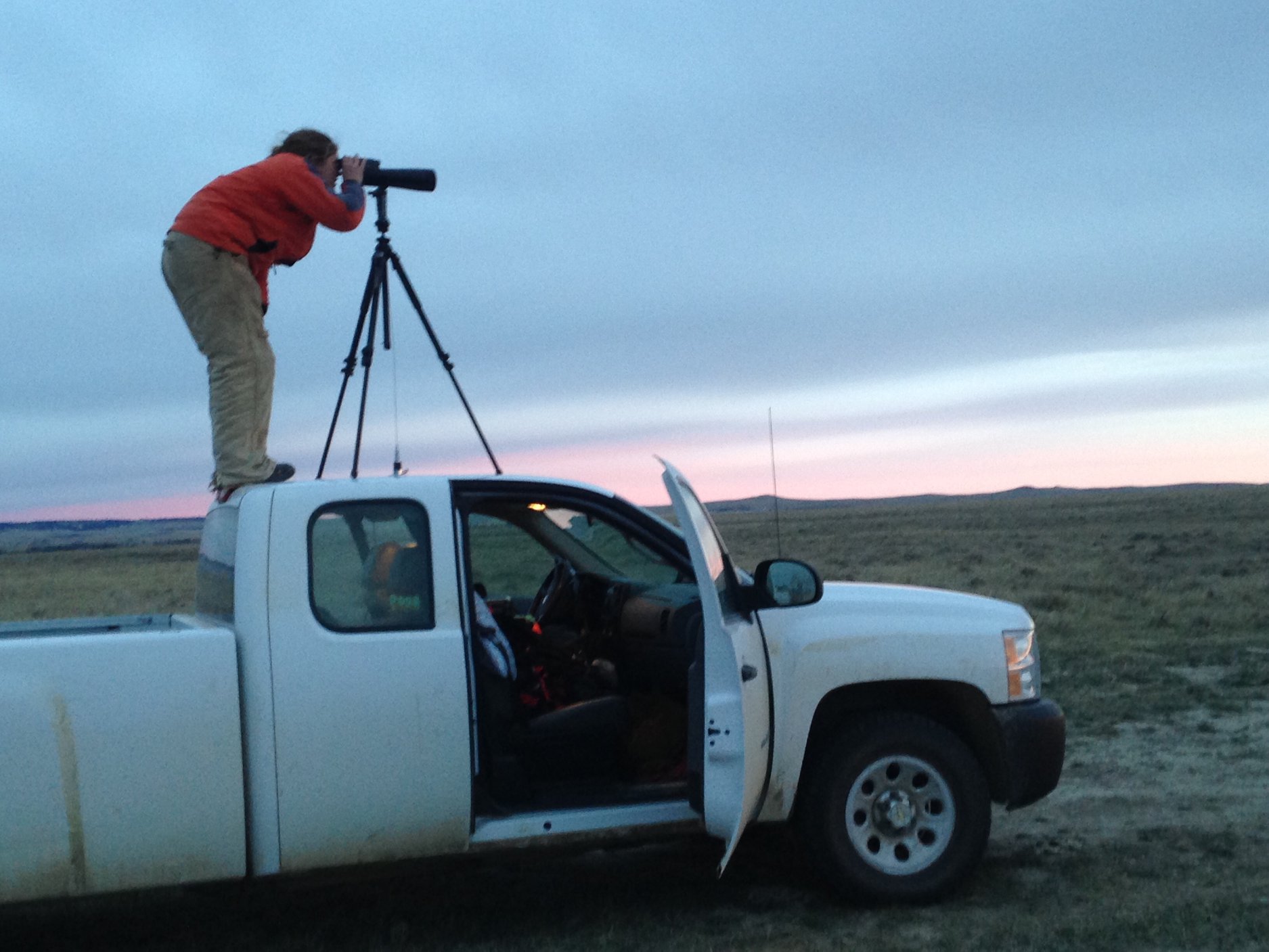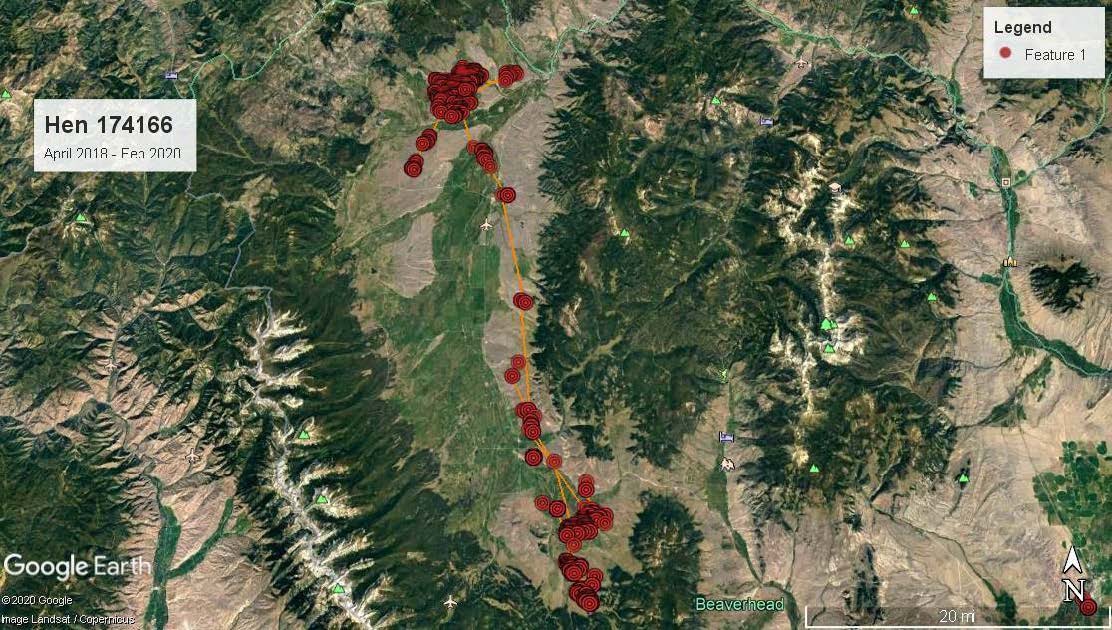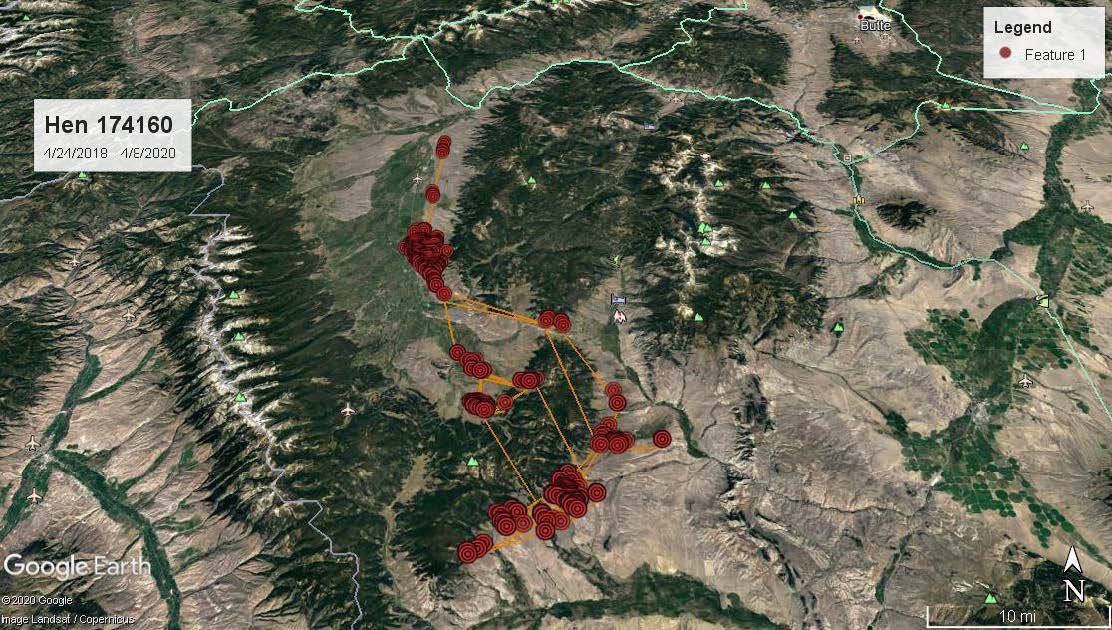




The largest populations are in northern Montana, the Yellowstone watershed, and southwest Montana. There are three core areas located in southwest Montana along with dispersed general habitat. Sage-grouse in many of these areas are largely non-migratory or make short distance migrations. Sage-grouse in some areas do make large seasonal migrations though, such as along Montana’s Hi-Line (Newton et al. 2017). Another example is in the Upper Big Hole Valley, north of the southwest Montana core areas. The primary threats to sage-grouse in southwest Montana are improper livestock grazing, conifer expansion, and sagebrush elimination (USFWS 2013).
To better manage and conserve sage-grouse and sagebrush habitat across landownerships, managers and conservation partners have marked hens in this area with solar powered satellite transmitters since 2018. Objectives of this study are to define sage-grouse seasonal habitat use in the Upper Big Hole Valley; identify and characterize seasonal use outside the Upper Big Hole Valley; determine migratory status of the Upper Big Hole population; identify migration corridors and stop-over locations between the Upper Big Hole Valley and the surrounding area; and determine if the Big Hole population contributes to genetic connectivity across the wider population in southwest Montana and Idaho by identifying whether migration occurs during the breeding season.
FWP is monitoring hen movement via GPS data downloaded from Argos satellites every 4-20 days. PTTs were programmed to fix locations and transmit to Argos satellites at times and cycles that accounted for daily and seasonal behavior of the birds. To date, there have been two instrumented sage-grouse hens that have made large annual seasonal movements. One hen moved more than 30 miles between the Wisdom area and the south end of the Big Hole Valley during both years that she was monitored. A second hen moved even further south, more than 40 miles, and out of the Big Hole Valley during both years she was monitored.
FWP, USFWS Partners for Fish and Wildlife Program, NRCS, BLM, USFS, Montana DNRC, The Nature Conservancy, Vigilante Electric Cooperative, and several area landowners and ranchers are all critical partners for the success of this project.
Newton, R.E., J.D. Tack, J.C. Carlson, M.R. Matchett, P.J. Fargey and D.E. Naugle. 2017. Longest sage-grouse migratory behavior sustained by intact pathways. Journal of Wildlife Management 81: 962-972.



